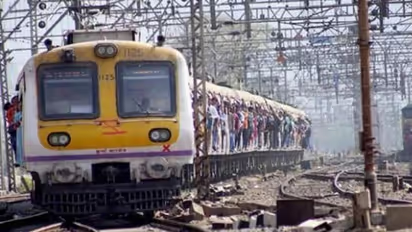Bengaluru: Sub-urban rail between Whitefield and Kengeri likely to be scrapped; Here's why

Synopsis
Bengaluru’s 35-km Whitefield-Kengeri suburban rail corridor, part of the 148-km suburban rail project, may be scrapped due to overlap with the Namma Metro’s Purple Line. Authorities are considering alternative routes to improve connectivity, with K-RIDE proposing a double-decker flyover to maintain rail service.
Bengaluru’s 35-km Whitefield-Kengeri suburban rail corridor, also called the Parijata route, might be scrapped, according to a report. This route is part of the larger 148-km Bengaluru suburban rail project, but the authorities are now considering cancelling it. The reason is that the route runs parallel to the 43-km Purple Line of Namma Metro, which already connects Whitefield (Kadugodi) in the east to Challaghatta in the west.
In a recent meeting chaired by Union Minister of State for Railways V Somanna and Karnataka Commerce and Industry Minister MB Patil, it was decided in principle to cancel the Whitefield suburban rail corridor. Officials say this decision comes after evaluating the overlap between the suburban rail and metro services.
Is Bengaluru's sub-urban railway project being sidelined? Here’s what we know
Instead of the Parijata route, the authorities are now looking at alternative suburban rail routes to improve Bengaluru’s connectivity. Some new options being considered include linking Chikkabanavara to Tumkur via Dabaspet, connecting Chikkabanavara to Magadi, and establishing a rail link between Rajanukunte and Gauribidanur via Doddaballapur. These new routes aim to serve areas on the outskirts of Bengaluru and are part of the plan to improve access to new hubs like the Knowledge, Wellbeing, and Innovation (KWIN) City, which covers 5,800 acres in Doddaballapur and Nelamangala.
The Bengaluru suburban rail project, approved in October 2020, has four corridors totalling 148 km. Construction is already underway on two of these lines: the Mallige Line, which covers 24 km from Baiyappanahalli to Chikkabanavara, and the Kanaka Line, a 46 km stretch from Hillage to Rajanukunte. A 41-km stretch connecting KSR Bengaluru to Yelahanka and Devanahalli, including the airport, is still under tender.
Prime Minister Narendra Modi laid the foundation for the suburban rail project in June 2022, but the work has been progressing slowly. Experts have pointed out that suburban rail services are faster and cheaper than the metro, and they provide fewer but strategically placed stations for longer-distance travel, unlike the metro with stations almost every kilometer.
In addition to the current suburban rail project, there are plans for K-Ride Phase 2, a 452-km network connecting Bengaluru with nearby towns like Kolar, Tumkur, Mysore, and Hosur. However, South Western Railway (SWR) has urged the Karnataka government to prioritize completing the ongoing K-RIDE projects first.
Karnataka chief secretary Shalini Rajneesh presses for faster completion of Bengaluru sub-urban rail project
Regarding the Parijata route, K-RIDE has opposed its cancellation and suggested an alternative. They propose building a double-decker flyover from Bengaluru city to Kengeri, with the suburban rail on the upper deck and a road for vehicles on the lower deck. Officials argue that both the metro and suburban rail serve different purposes and should not be scrapped once approved.
There are challenges with the Whitefield to KSR Bengaluru route, including additional tracks that SWR plans to lay. K-RIDE’s proposal to integrate suburban rail with SWR’s tracks and other technical issues are still under review.
Stay updated with the Breaking News Today and Latest News from across India and around the world. Get real-time updates, in-depth analysis, and comprehensive coverage of India News, World News, Indian Defence News, Kerala News, and Karnataka News. From politics to current affairs, follow every major story as it unfolds. Download the Asianet News Official App from the Android Play Store and iPhone App Store for accurate and timely news updates anytime, anywhere.